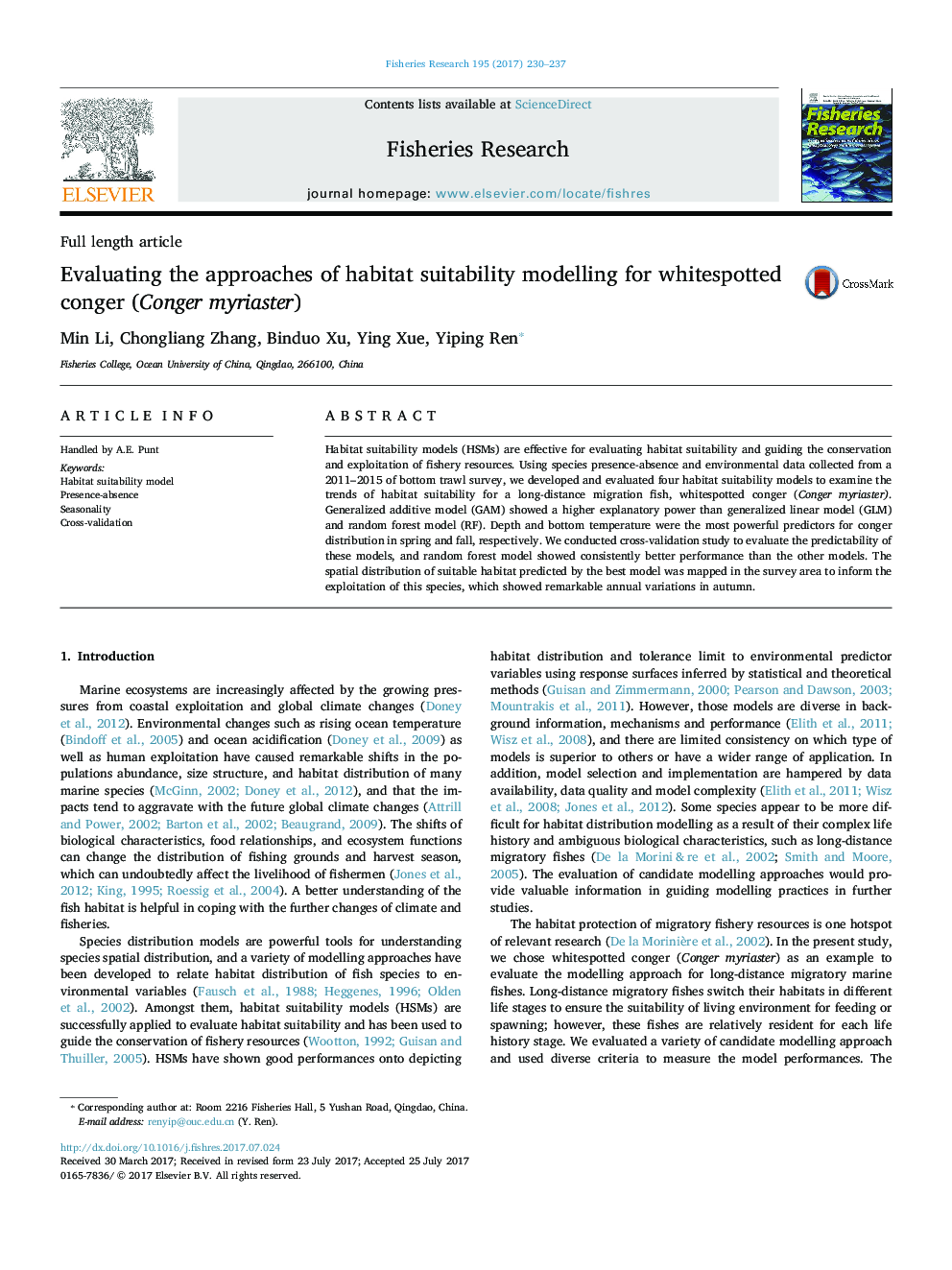| Article ID | Journal | Published Year | Pages | File Type |
|---|---|---|---|---|
| 5765521 | Fisheries Research | 2017 | 8 Pages |
Abstract
Habitat suitability models (HSMs) are effective for evaluating habitat suitability and guiding the conservation and exploitation of fishery resources. Using species presence-absence and environmental data collected from a 2011-2015 of bottom trawl survey, we developed and evaluated four habitat suitability models to examine the trends of habitat suitability for a long-distance migration fish, whitespotted conger (Conger myriaster). Generalized additive model (GAM) showed a higher explanatory power than generalized linear model (GLM) and random forest model (RF). Depth and bottom temperature were the most powerful predictors for conger distribution in spring and fall, respectively. We conducted cross-validation study to evaluate the predictability of these models, and random forest model showed consistently better performance than the other models. The spatial distribution of suitable habitat predicted by the best model was mapped in the survey area to inform the exploitation of this species, which showed remarkable annual variations in autumn.
Related Topics
Life Sciences
Agricultural and Biological Sciences
Aquatic Science
Authors
Min Li, Chongliang Zhang, Binduo Xu, Ying Xue, Yiping Ren,
